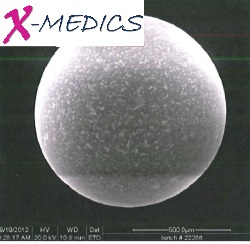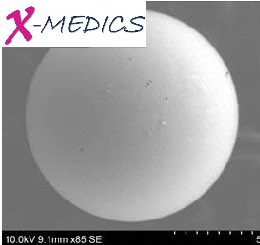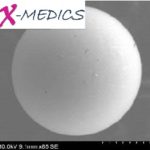The Optimum Surface Finish of Tantalum Beads
The surface finish may be a consideration when working with tantalum beads. Determination of a proper finish for a given application can be problematic, as there are no specific ball specifications for tantalum. Common industry ball grades adapted from steel ball processing (like e.g. ABMA or ISO 3290) are also used to grade tantalum balls. However these standards only measure the basic diameter of the ball or bead, not the quality of the finish.
> Click here to learn more about Tantalum Ball Grade Specifications
Determination of surface roughness
Traditionally, Ra measurements are used to describe the surface finish of a component. When it comes to small diameter balls, such measurements are not often feasible, as the reading “tip” of the equipment is often relatively large when compared to the roughness of the ball to be measured. It may therefore be difficult to use these Ra values to describe the actual roughness of the ball’s surface.
We find that Scanning Electron Micrographs are a good way to evaluate the finish of the tantalum surface for beads or balls. It does not provide a quantitative figure, but offers a good visual idea about the surface quality. The SEM pictures below shows examples of 2 polished and a super-polished tantalum sphere.
Controlling the finish during beads processing
During the ball manufacturing process from tantalum wire, the surface roughness may be affected by a number of parameters during processing, including: exact equipment settings, timing, the type and concentration of the grinding/polishing media, lubrication, etc. Variations in the surface finish after a process step will therefore occur from batch to batch. For a well-controlled ball manufacturing process, the variations in the surface roughness will normally be less than illustrated by balls 1 and 2 above. The common way to reduce the surface roughness is to polish for a longer time and/or add additional polishing steps in the processing. More processing will in turn increase the costs of production.
Cost optimized processing
The optimum surface quality is a trade-off between cost and product performance. To help our customers, X-medics has introduced 2 surface qualities: a standard-polished and a super-polished. The standard polished beads undergo a single polishing step during bead processing and is a cost optimised option suitable for most applications. The super polished beads are a high-end option which undergo several final polishing steps after the grinding/lapping operation, and may be used where the surface roughness of the beads are of importance (e.g. automated processing).
More information
Find information on X-medics’ products here
Disclaimer: The content of this site is copyrighted by X-medics S.m.b.a. By using this Site, you consent to the collection and use of your information by X-medics as set forth in our policy. X-medics cannot be held responsibly for any use of products in a specific application. Haftungsausschluss: Der Inhalt dieser Website ist urheberrechtlich geschützt durch X-medics S.m.b.a. Durch die Nutzung dieser Website erklären Sie sich mit der Erhebung und Verwendung Ihrer Daten durch X-medics wie in unseren Richtlinien dargelegt einverstanden. X-medics kann nicht für die Verwendung von Produkten in einer bestimmten Anwendung verantwortlich gemacht werden. Descargo de responsabilidad: El contenido de este sitio es propiedad de X-medics S.m.b.a. Al usar este Sitio, usted acepta la recopilación y el uso de su información por parte de X-médicos como se establece en nuestra política. X-medics no se puede responsabilizar por el uso de productos en una aplicación específica.






